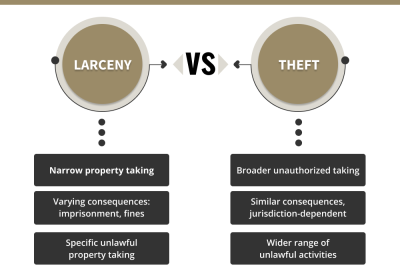
Cybercrime: The Rise of Extortion and Fraud Tactics Today

The digital age has brought about a surge in cybercrime, impacting individuals and businesses alike. Among the myriad forms of cybercrime, cyber crime extortion has become increasingly prevalent, leveraging the power of the internet to threaten individuals and organizations with financial harm. As technology evolves, so do the methods employed by cybercriminals, leading to alarming increases in extortion of money through various tactics meant to exploit vulnerabilities in both personal and corporate security systems.
This article aims to delve deep into the complexities of extortion money schemes and the various ways these tactics manifest in today’s interconnected world. Understanding how to extort money from victims has transitioned into a sophisticated enterprise for many criminals, leading to an urgent need for awareness and robust preventative measures. In exploring this phenomenon, we will also look at the evolution of extortion tactics, the mechanics of online fraud, and the importance of legal frameworks to combat these crimes.
- Understanding Cybercrime
- The Evolution of Extortion Tactics
- Common Types of Cyber Extortion
- The Mechanics of Online Fraud
- The Role of Technology in Facilitating Crime
- Legal Implications and Law Enforcement Efforts
- Protecting Yourself from Cybercrime
- The Future of Cybercrime: Trends and Predictions
- Conclusion
- Additional Resources for Awareness and Prevention
Understanding Cybercrime
Cybercrime encompasses a range of illegal activities that are executed through the internet or other computer networks. While many focus on hacks and data breaches, the cyber crime extortion sector has seen a significant rise. Criminals often exploit the anonymity and broad reach provided by digital platforms to target victims, making it crucial for individuals and businesses to understand the nature of these threats and how they operate.
The Different Facets of Cybercrime
Cybercrime can be categorized into various types, with extortion of money being a significant challenge. It ranges from phishing scams to ransomware, where attackers may threaten to publish sensitive information or disable essential services unless a ransom is paid. The versatility and reach of these tactics mean that the digital criminal landscape is always shifting, and with this evolution comes an increase in the sophistication of threats faced by everyday users and corporations alike.
The Evolution of Extortion Tactics
Historically, extortion was largely confined to physical encounters, where intimidation may occur face-to-face. However, the onset of the internet has transformed these tactics, allowing extortionists to reach their victims from anywhere in the world. As cybercriminals adapt, the methods by which they extort money have diversified significantly.
Digital Tools and Techniques Employed by Criminals
- Ransomware: This involves encrypting a victim's files and demanding payment for the decryption key.
- Social Engineering: Manipulating individuals into divulging confidential information under the pretense of legitimacy.
- Threatening Doxxing: The act of threatening to release personal or embarrassing information if demands are not met.
- Phishing: Fraudulently obtaining sensitive information through deceptive emails and websites.
Each of these methods highlights the growing complexity of cyber crime extortion, allowing those with malicious intent to command money with relative ease and anonymity.
Common Types of Cyber Extortion
There are several distinct types of cyber crime extortion that are particularly rampant in the current digital environment. Understanding these can better prepare individuals and organizations to defend against potential threats.
Ransomware Attacks
Ransomware has become one of the most notorious forms of extortion money schemes. In these attacks, malware encrypts the victim's files and demands a ransom for access. The exorbitant demand creates an immediate instillation of fear, often compelling victims to comply in hopes of regaining access to their data.
Business Email Compromise (BEC)
In BEC scams, attackers impersonate high-ranking officials within a company, commonly known as "CEO fraud." They trick employees into transferring funds or divulging sensitive information, which can lead to significant financial loss.
Doxing and Digital Blackmail
Attackers may threaten to release personal information or images unless they receive payment. This extortion of money can be particularly devastating, as it not only involves financial loss but can also harm the reputations and personal lives of victims.
The Mechanics of Online Fraud
Online fraud is a critical aspect of cyber crime extortion, involving the obstruction of financial transactions via deceptive tactics. Understanding how these fraudulent activities are structured allows individuals and companies alike to create more robust defenses.
Identification and Targeting of Victims
Cybercriminals leverage social media and professional networks to gather information about potential victims, tailoring their efforts to maximize their success rates. Victims are often selected based on perceived vulnerabilities, such as lack of cybersecurity awareness or emotional susceptibility.
Execution of the Fraud
Once a target is identified, criminals may employ various tactics to execute their schemes, such as fake websites, spoofed emails, and direct contact masquerading as legitimate entities. This high level of sophistication can deceive even the most cautious individuals, leading to costly repercussions.
The Role of Technology in Facilitating Crime
Technology plays a dual role in the realm of cyber crime extortion. On the one hand, it enables the proliferation of crime, while on the other, it offers tools for interception and prevention. Understanding this dynamic is crucial for effectively combating cybercrime.
Encryption and Anonymization Tools
Many criminals utilize encryption techniques to obscure their actions and identities, making them more challenging to trace. The use of cryptocurrencies, in particular, has facilitated anonymous transactions, further complicating enforcement actions against those who extort money.
Cybersecurity Technologies
Conversely, advances in cybersecurity technologies are making it easier for businesses and individuals to protect themselves from attacks. Firewalls, antivirus software, and intrusion detection systems are just a few examples of protective measures that can mitigate the risks associated with cyber crime extortion.
Legal Implications and Law Enforcement Efforts
The rise of cyber crime extortion necessitates a robust legal response to hold perpetrators accountable and deter future offenses. Understanding these legal frameworks is essential for victims seeking justice and prevention.
Challenges in Prosecution
Prosecuting cybercriminals poses significant challenges due to issues related to jurisdiction, anonymity, and the technological complexities of digital evidence. Furthermore, extortion money often crosses state and international borders, complicating law enforcement efforts.
Collaborative Efforts for Prevention
Agencies across various jurisdictions are increasingly coordinating to address the growing threat of cyber extortion. Collaborative efforts, such as sharing intelligence and resources, can lead to more effective interventions and ultimately, reduce the incidence of these crimes.
Protecting Yourself from Cybercrime
Given the rise of cyber crime extortion, taking proactive steps to safeguard yourself against potential scams is critical. Awareness and education are paramount in mitigating risks.
Recognizing Red Flags
Being able to identify potential warning signs of fraudulent schemes can greatly reduce vulnerability. Unsolicited communications requesting sensitive information, offers that seem too good to be true, or sudden demands for urgent payments are all red flags that warrant caution.
Implementing Strong Security Measures
Utilizing strong passwords, enabling two-factor authentication, and staying informed about the latest cybersecurity threats can substantially enhance personal security. Regular software updates and awareness campaigns can keep everyone informed about possible vulnerabilities.
The Future of Cybercrime: Trends and Predictions
As technology continues to evolve, so will the tactics employed by cybercriminals, including their strategies for extorting money. Anticipating future trends can aid in developing preventative measures.
AI and Automation in Cybercrime
The incorporation of artificial intelligence and automated tools in cybercrime is a growing trend. As these technologies become more sophisticated, they may enable even wider-reaching and more complex attacks.
Increased Regulation and Enforcement
In response to the growing threat of cyber crime extortion, lawmakers are likely to introduce more comprehensive regulations aimed at protecting individuals and businesses. Enhanced enforcement mechanisms may also facilitate greater accountability for cybercriminals.
Conclusion
The rise of cyber crime extortion and the various tactics employed by criminals serves as a reminder of the importance of vigilance in the digital age. As threats evolve and new methods emerge, understanding the nature of these crimes and taking proactive measures to protect ourselves becomes increasingly essential.
By recognizing the tactics employed in extortion of money, understanding the roles technology plays, and staying informed about legal frameworks and prevention strategies, individuals and organizations can reasonably safeguard against the societal impacts of cybercrime. Cybersecurity awareness and education will be key in the ongoing battle against those who seek to extort money for their gain.
Additional Resources for Awareness and Prevention
To further your understanding and resilience against cyber crime extortion, consider tapping into the following resources:
- Federal Bureau of Investigation (FBI): Offers extensive information on cyber crime investigations and prevention strategies.
- Cybersecurity & Infrastructure Security Agency (CISA): Provides tools and resources designed to improve cybersecurity resilience.
- Anti-Phishing Working Group (APWG): Focuses on eliminating the financial gain of phishing attacks through awareness.
- Internet Crime Complaint Center (IC3): A platform to report incidents of cybercrime and seek assistance.
Staying informed and proactive is essential in the increasingly complex world of cybercrime. Through awareness and education, we can work together to mitigate the risks of extortion money and protect ourselves from those who endeavor to extort money through fear and intimidation.
Did you find this article helpful? Cybercrime: The Rise of Extortion and Fraud Tactics Today See more here General.
Leave a Reply





Related posts